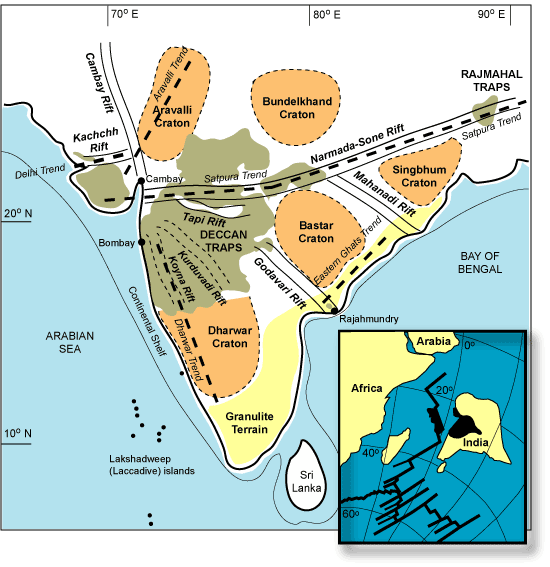What do you understand by Deccan Trap? Describes its characteristics. (CSE 1995)
Deccan Trap is a thick sequence (3200 metres) of late cretaceous basaltic lava flows that cover about 500000 sq. km. of peninsular India. Due to erosion this basaltic lava soil has been eroded step wise which is often termed as Deccan trap.
This Deccan trap is widely prevalent in Deccan plateau, covering Saurashtra, Maharashtra, Karnataka parts of Tamil Nadu and Andhra Pradesh. Its thickness is not uniform rather it is somewhere deep and somewhere shallow depending on the surface whether flat or sloppy.

|
| · It is largely called Black soil or regur soil. Owing to high proportion of clay content, they are sticky when wet and consequently difficult to plough. They develop under semi-arid conditions in the areas covered with basalt. · Deccan trap are lava country, here humus is almost absent in the soil and the black color of the soil due to the present of titanium salt. They are rich in lime. · The soil is moisture retentive and very productive especially in the low lands and in the river valleys where it is deep and clayey. · In the high hills and on the slopes. These soils are generally thin, sandy and poor. Potash and nitrogen, so essential for rich plant growth and phosphorus which essential for grain crops, are not adequately present in these soils. |
Read more about Deccan Trap:
